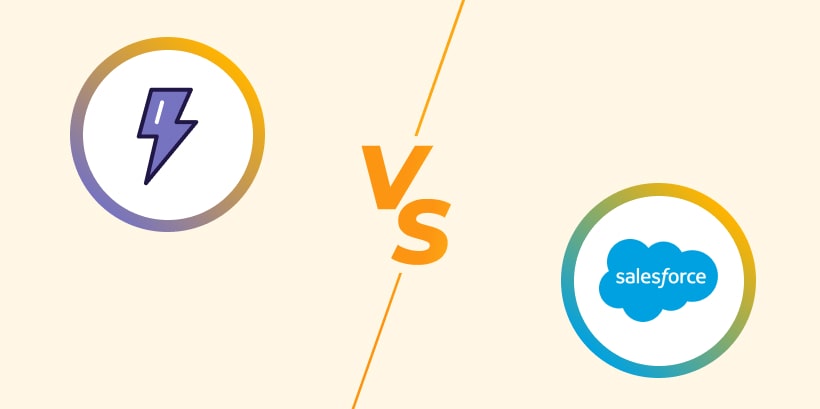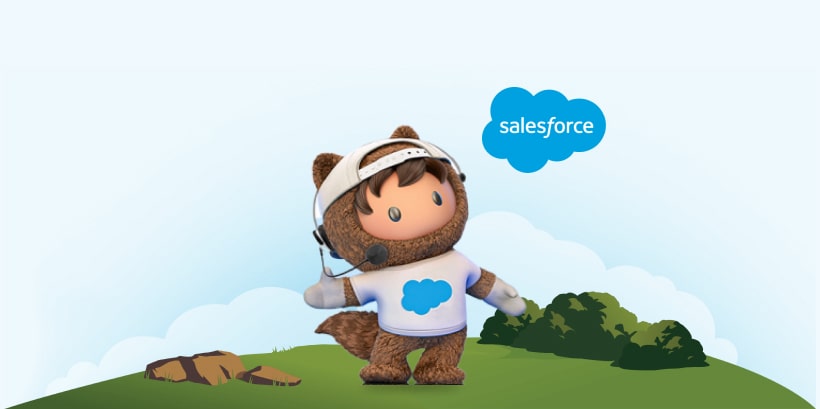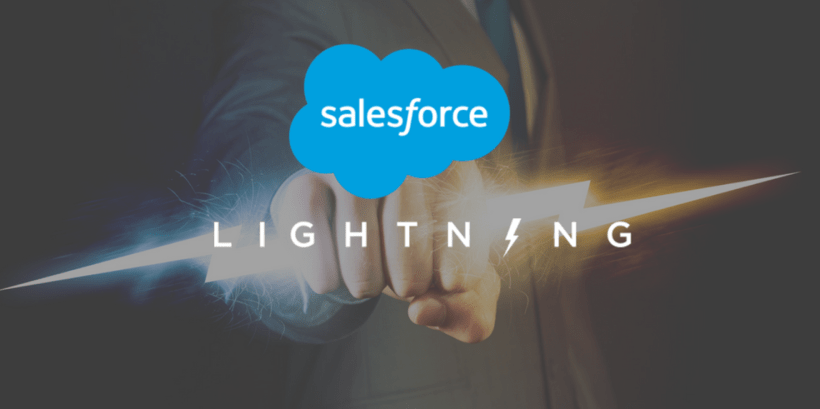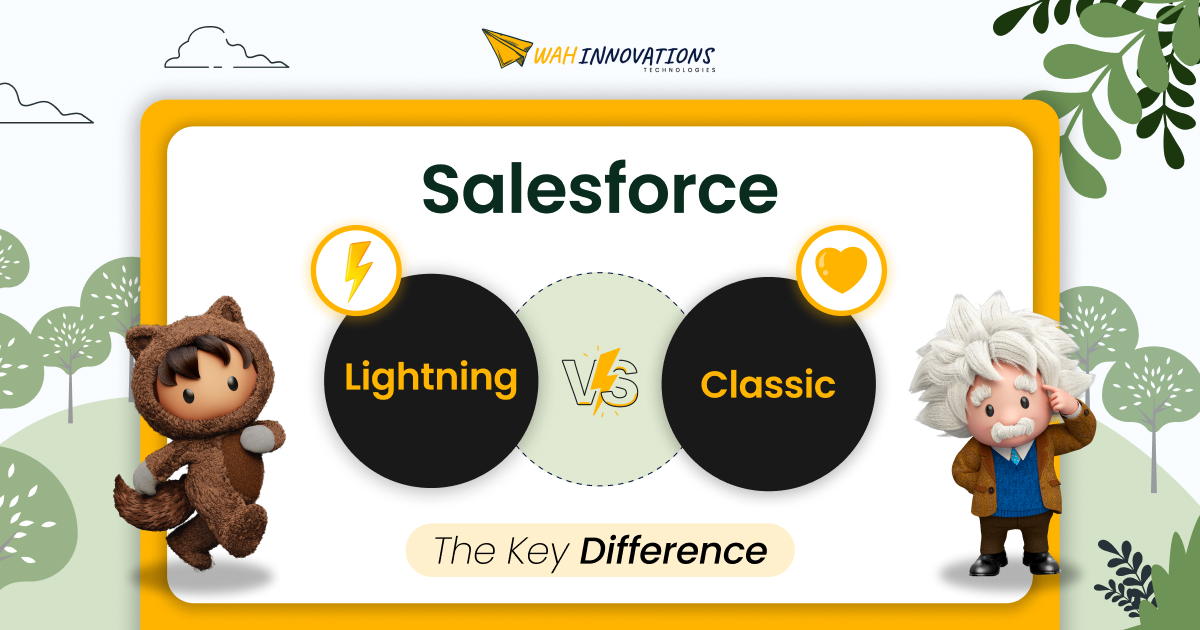Salesforce is a highly popular Customer Relationship Management platform that businesses use globally. Besides CRM tools, Salesforce allow your business to cater to your audience by helping you build unique and innovative applications and websites. The two distinct platforms for this purpose are Salesforce Lightning vs. Classic.
The fact that both these platforms help achieve the same goal might make it tough for you to choose the right one for your business. If you are wondering which is better between Salesforce Classic and Lightning, this blog is definitely for you. Keep reading for a detailed comparison of Salesforce Lightning vs. Classic.
Key Differences between Salesforce Classic and Lightning
The following table highlights the key differences between Salesforce Classic vs. Lightning.

| Salesforce Classic | Salesforce Lightning |
|---|---|
| This version has an interface loaded with text, is less modern, and is a tab-based platform. | This updated version has a modern, component-based, and visually appealing interface. |
| This has a slower performance speed. The page also needs to reload frequently. | It is a single-page application framework which is faster and has better caching. |
| Its reporting and analytics feature is less interactive and basic. | This offers real-time updates along with enhanced and interactive reporting and analytics features. |
| This version has limited customization features and relies on Visual force and Apex. | This version offers extensive customization options along with Lightning App Builder and Lightning Components. |
| Salesforce Classic has very limited updates for future. | Its regular updates highlight Salesforce’s constant innovation. |
| The integration process is very complex with very few optimized apps on AppExchange. | It is seamless with an API-first approach and more lightning-optimized apps. |
| Familiar and less interactive user interface. | This has intuitive interface with several drag-and-drop tools and reusable components. |
| The dashboard customization feature here is less flexible and more static. | The dashboard customization feature is highly flexible and customizable. |
| This version requires more custom coding for development. | Development of this tool is easier with a drag-and-drop feature. |
| This offers a suboptimal mobile experience and is based on Salesforce1 mobile app. | It comes with an optimized and responsive design with a rich native mobile experience. |
| This version supports updates but has no major innovations yet. | It comes with new and frequent feature updates and improvements. |
What is Salesforce Classic?

For a deeper knowledge of the differences between Salesforce Classic and Lightning, let’s take you through what is Salesforce Classic.
In simple terms, Salesforce Classic is the original platform that Salesforce introduced. Unlike Salesforce Lightning services, this original version comes with a text-heavy and tab-based design. Although it provides essential customization features, it lacks modern features and customization options.
Key Features of Salesforce Classic

The points below will take you through the crucial features of Salesforce Classic that help differentiate Classic vs. Lightning in Salesforce.
- Basic Customization: In Salesforce Lightning vs. Classic, the latter offers very basic customization features as it primarily uses Apex and Visual Force.
- Tab-based Navigation: It also hosts traditional and straightforward navigation that focuses on tabs and lists.
- Workflows: From Salesforce Lightning vs. Classic, the latter supports traditional workflow rules and process automation.
- Reporting: Provides Basic Visualization with standard reports and dashboards.
- Familiar Interface: It has a stable well-known environment for every user.
- Integration: With dedicated support engineers, Salesforce Classic integrates well with third-party apps, though the process could be more streamlined.
What is Salesforce Lightning?

To address the shortcomings of Salesforce Classic, Salesforce introduced a better and updated version, Salesforce Lightning.
To better understand the differences between Salesforce Classic vs. Lightning, let’s delve into what is Lightning service by Salesforce.
Salesforce Lightning is a modern and user-based platform that helps boost productivity and enhance user experience. Salesforce Lightning services offer advanced customization through drag-and-drop tools. This allows developers to build web applications without deep knowledge of coding.
While considering what is Salesforce Lightning, you must note that unlike the former, Lightning comes with AI-driven features. This helps enhance reporting and automation of the platform along with seamless mobile optimization. Furthermore, Lightning’s future updates to its primary platform are a gateway to innovations and future developments.
Important Features of Salesforce Lightning

Here is a list of important features of lightning that tend to make it a better option between Salesforce Lightning vs. Classic.
- Modern Interface: This Salesforce Lightning feature makes the platform visually appealing with component-based designs.
- Lightning Flow: Between Salesforce Lightning vs. Classic, the former hosts powerful automation tools to go ahead with complex processes.
- Improved Performance: It offers faster load time with a single-page application framework as one of the Salesforce Lightning benefits.
- Lightning AppBuilder: Between Salesforce Lightning vs. Classic, the former makes app building easy with simple drag-and-drop components.
- Einstein AI: Lightning services easily integrate with Einstein AI and offer predictive insights to analyze data and automate work processes. This is another Salesforce Classic vs. Lightning Experience that you do not want to miss while choosing which is better for your organization.
- Reusable Components: Salesforce Lightning services also offer modular developments for better customization.
- Regular Updates: Between Salesforce Lightning vs. Classic, the former offers frequent feature updates to ensure enhancements and better performances.
- Advanced Reporting: The Salesforce Lightning services between Salesforce Lightning and Classic bring to the table real-time and customizable dashboards for interactive and data-driven reporting and analysis experience.
Bottom Line
To conclude, this is everything you must know about Salesforce Lightning vs. Classic to choose which is right for you.
On this note, to determine which is better between Salesforce Lighting and Classic, you must remember certain things. Salesforce Lightning offers a modern and flexible interface with diverse enhanced features. This includes customization options, AI-driven platforms, and improved mobile accessibility. These make Salesforce Lightning reliable and familiar.
Salesforce Classic, on the other hand, is majorly text-based and lacks the above features. For detailed knowledge on which Salesforce services are best for your business, book a free consultation today.
Frequently Asked Questions
To migrate from Salesforce Classic to Lightning, you can connect with Salesforce Lightning Service providers, like WahInnovations. Our team of dedicated Salesforce support experts will train your team as necessary, and customize the interface to ensure a successful and gradual transition.
Yes, you can switch back from Salesforce Lightning to Salesforce Classic. However, you will not be able to access the frequent updates of the former after switching.
Yes, owing to its modern interface, mobile-friendly approach, and single-page application framework, Salesforce Lightning faces fewer page reloads. This helps improve overall performance and makes Salesforce Lightning faster than Salesforce Classic.

